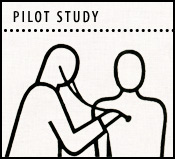Special Report: Innovation in Bangalore – A Conversation with Indus Khaitan
In Bangalore we were to spend the next two days meeting with individuals and institutions that embodied innovation and entrepreneurship.  The meetings began in the garden patio of the Bangalore Leela Palace, where we wagered the coffee would be strong.  Nikhil, our India Bureau Chief, had arranged for us to sit down with Indus Khaitan and discuss how technology is engendering change in communication, information access, banking, and education in India.
 Indus has made a life for himself as a serial entrepreneur and early-stage investor. In May 2009, Indus joined The Morpheus as a partner. The Morpheus is an early stage investment firm that works with startups in the first 12 to 18 months of business, a period known as the “valley of death.“ As a firm, they act as a “limited-cofounder,” in a hands-on capacity to assist founders by offering their wide breadth of experience, making critical introductions, and providing a nominal amount of capital.  The firm refers to this combination of support as its “Business Acceleration Program.”
Indus has made a life for himself as a serial entrepreneur and early-stage investor. In May 2009, Indus joined The Morpheus as a partner. The Morpheus is an early stage investment firm that works with startups in the first 12 to 18 months of business, a period known as the “valley of death.“ As a firm, they act as a “limited-cofounder,” in a hands-on capacity to assist founders by offering their wide breadth of experience, making critical introductions, and providing a nominal amount of capital.  The firm refers to this combination of support as its “Business Acceleration Program.”
The comparison that most people make with a project like Indus’ is Y-combinator, an early stage startup incubator created by Paul Graham, active in Silicon Valley and Cambridge, Massachusetts. Â However, Indus is quick to point out that one can’t so quickly draw direct parallels between the Silicon Valley startup world and that of Bangalore. Â This rings true both in the business models of the startups themselves, as well as the role institutional investors play in startup growth. Â The Morpheus’ portfolio companies not only include web startups, but also real estate firms, retail businesses, and professional service providers. Â The Indian markets pose challenges for startups in all sectors, and The Morpheus is able to provide support across many industries. Â As Indus says, “India has a lot of unsolved problems.” Â This allows The Morpheus to branch out from the traditional technology-focused institutional angel investment model, while retaining the possibility for exponential growth across a broad base of portfolio companies.
Indus introduced himself in a reserved, yet youthful manner. Â After dispensing with the small talk about his time in Northern California, as well as the experiment of AsiaWheeling, we began discussing the sea change occurring in the Indian consumer market.
Negative Interest Rates?
We began the conversation with an uncommon financial phenomenon seen rarely outside the dark offices of Swiss Banks: negative interest.  The story began with a team of Indian railway laborers maintaining track in the country’s north, and earning heightened wages as a result of the National Rural Employment Guarantee Act, legislated in 2005.  Not accustomed to earning such wages, and because of the cost and difficulty of remitting it to the village in which their families resided, the laborers would squander the cash on vices.  Beginning to regret the errors of their ways, the workers began requesting their supervisor to physically retain their wages in the worker’s custody.  For this custody, the supervisor charged a fee, essentially creating a deposit account for the workers with negative interest.
 Why didn’t the workers simply open a real bank account?  The fact Indus shared, is that 81% of India is unbanked.  Because of the personal identification required, poor rural branch proximity, illiteracy, and a host of other issues ranging from trust to regulation, most Indians do not have bank accounts. This opportunity, in particular, is one that has been rediscovered by technology firms.  With the emergent developments such as sente and airtime banking in Africa, the players positioned most obviously are the mobile phone providers.  With excellent rural penetration and customer trust, these mobile providers could potentially turn every basic phone into a device for sending, receiving, and depositing cash.
Why didn’t the workers simply open a real bank account?  The fact Indus shared, is that 81% of India is unbanked.  Because of the personal identification required, poor rural branch proximity, illiteracy, and a host of other issues ranging from trust to regulation, most Indians do not have bank accounts. This opportunity, in particular, is one that has been rediscovered by technology firms.  With the emergent developments such as sente and airtime banking in Africa, the players positioned most obviously are the mobile phone providers.  With excellent rural penetration and customer trust, these mobile providers could potentially turn every basic phone into a device for sending, receiving, and depositing cash.
However, Indus explains, the mobile providers like Airtel and Vodafone aren’t licensed to engage in such activities;Â regulation prevents it. Â In their place comes a recently formed consortium of firms: Nokia, Obopay, and Yes Bank. Â Nokia, the hardware firm that dominates the handset market in India invested $70M in Obopay, the mobile software startup. Together, they have partnered India’s Yes Bank to capitalize on this opportunity, which represents the first step to providing scalable options for the now unbanked. Â Game on.
Learning from the Liquor Business
Conversing about this opportunity allowed us to analyze one of the truly massive oligopolies of India: the mobile phone market. Â India has over 700 million mobile phone subscribers, with anywhere from 400M to 500M active at any given time. Â Indus specifies that 95% of the connections are prepaid, offering ease to the consumer in budgeting and activation, as well as ease to the provider in reducing credit risk.
 Moreover, Indus mentioned that many of the lowest-income users of these phones do not know how to save or recall a number in the phone book, using the phone purely to receive calls (which is free), or simply call the last number dialed in the phone. Â AsiaWheeling and Indus brainstormed for a while on how one might design a phone to suggest common numbers for saving, which could be driven by an interactive voice interface. Â While such innovations would increase the cost of each phone in both hardware and an initial phase of software development, the decreasing cost of manufacturing and huge scale of the consumer base may soon warrant a similar technology. No doubt, firms like Nokia are undertaking such research across the global south.
Moreover, Indus mentioned that many of the lowest-income users of these phones do not know how to save or recall a number in the phone book, using the phone purely to receive calls (which is free), or simply call the last number dialed in the phone. Â AsiaWheeling and Indus brainstormed for a while on how one might design a phone to suggest common numbers for saving, which could be driven by an interactive voice interface. Â While such innovations would increase the cost of each phone in both hardware and an initial phase of software development, the decreasing cost of manufacturing and huge scale of the consumer base may soon warrant a similar technology. No doubt, firms like Nokia are undertaking such research across the global south.
While India looks strikingly modernized sitting in the garden patio of the Leela Palace, the reality is that 70% of Indians reside in rural areas, subsisting on farming and fishing. Â One of the major challenges faced by both Indus’ portfolio companies as well as giants like Airtel is reaching this vast, disparate, and relatively unconnected population. Â In fact, Indus exclaims, these rural areas command 60% of the marketing budget for such larger firms.
How does one market in a village? Â Many of the villages these companies seek to market to are not even on the books of the local government, and require a re-discovery by the private sector, a theme we saw repeatedly in India. Â Almost quaintly, firms like Airtel will send mascots dressed as mobile phones to villages to strut around as loudspeakers play music and corporate slogans. Â Radio, one of the most pervasive and low-cost mediums of mass communication, is used in conjunction with such physical appearances, alerting the populous of an event or giveaway in the village.
 Outdoor marketing is commonly strategically placed on temples and shrines, which welcome the income and serve as a fantastic replacement to the billboards that are non-existent in the vast majority of villages. Â Where did they learn these marketing techniques for the fragmented rural market? Â Who taught companies like Airtel how to sell to the common man? Â Indus elucidates for us in a hushed tone: they learned from liquor companies. Â While we were initially surprised, it became clear that the liquor industry’s marketing has been some of the most original and effective. As AsiaWheeling was told in later interactions, the liquor store is the easiest shop to find in India, as it’s the only business with a queue.
Outdoor marketing is commonly strategically placed on temples and shrines, which welcome the income and serve as a fantastic replacement to the billboards that are non-existent in the vast majority of villages. Â Where did they learn these marketing techniques for the fragmented rural market? Â Who taught companies like Airtel how to sell to the common man? Â Indus elucidates for us in a hushed tone: they learned from liquor companies. Â While we were initially surprised, it became clear that the liquor industry’s marketing has been some of the most original and effective. As AsiaWheeling was told in later interactions, the liquor store is the easiest shop to find in India, as it’s the only business with a queue.
Extremely Lucrative Schools
Ask Indus what he’s looking for in terms of talent to staff the startups in his portfolio, and he’ll tell you that specialists are the most desirable. Â Whether it’s in marketing, software architecture, or engineering, a specialist proves a critical asset to the firm. Â This comes as no surprise, given the value of experience in any labor market. Particularly, Indus looks for those who have a proven knack for marketing, which, he quips, is so sorely lacking in many Indian firms.
This brought us to learning about the phenomenon of for-profit educational institutions that have been on the rise to cater to the many new entrants to the “knowledge labor” pool looking to ingratiate themselves to potential employers.  Many of these schools are tiny, ad-hoc institutions using space in an office building, peddling meaningless degrees.  However, operating such an institution proves to be “extremely lucrative.” Because of regulatory and bureaucratic obstacles which would otherwise let new entrants in easily and drive down profitability, 90% of such schools are started by former politicians.
Interestingly, he notes that in funding and hiring new grads he puts no stigma on not having graduated from an IIT or IIM, which are the de facto top schools in India for engineering and management, respectively. Â Indus claims that the drive of those graduating from second-tier schools is often heightened because they have more to prove, and their level of intelligence and training proxies that of a tier-one grad. Â However at any level, he reiterates, the soft skills of persuasive communication, interpersonal coordination, and branding are in demand.
Exacting in conversation, with a swift recollection of figures and percentages, Indus proved to be a fantastic introduction to AsiaWheeling’s time in Bangalore. Â The broad, yet interconnected nature of India’s evolving consumer-facing industries provided a firm foundation for the remainder of our investigation of innovation in India through the lens of this city.
















Comments
Scott & Woody:
It was great meeting you guys in Bangalore! Your coverage is awesome for uninitiated traveler like me. I have been following your chronicles. Best of Luck and happy biking ahead!
Cheers,
Indus
@Indus,
Thanks for sitting down with us and sharing your experiences. Hope you continue to enjoy the blog, and if you’re ever in the mood to hop on a bicycle and wheel for a bit, we’d love to have you join in.
Scott
Post a comment